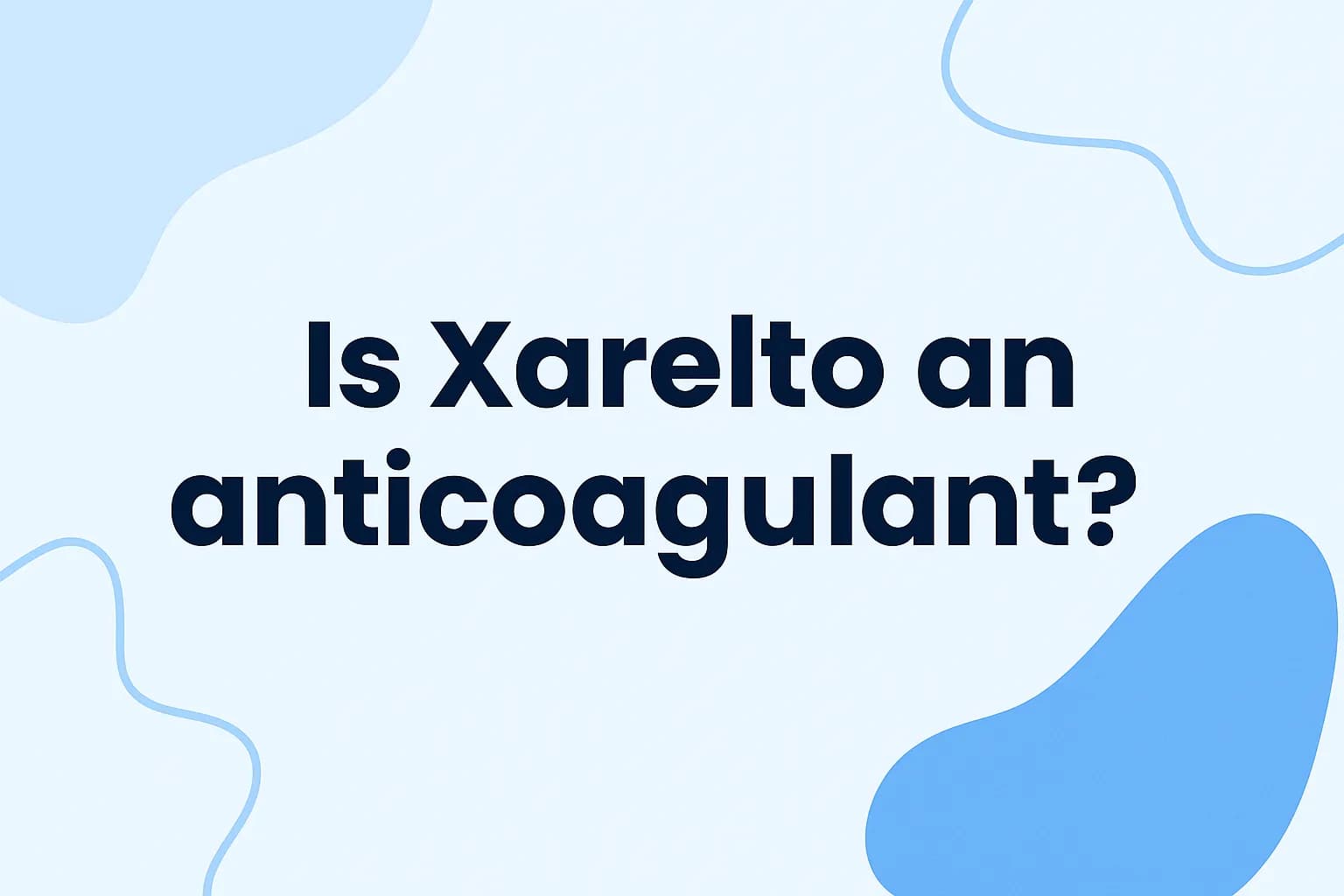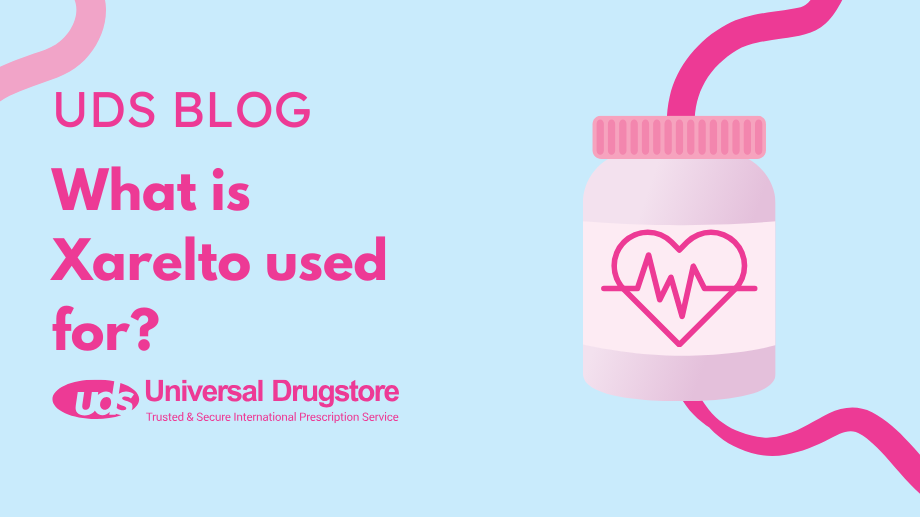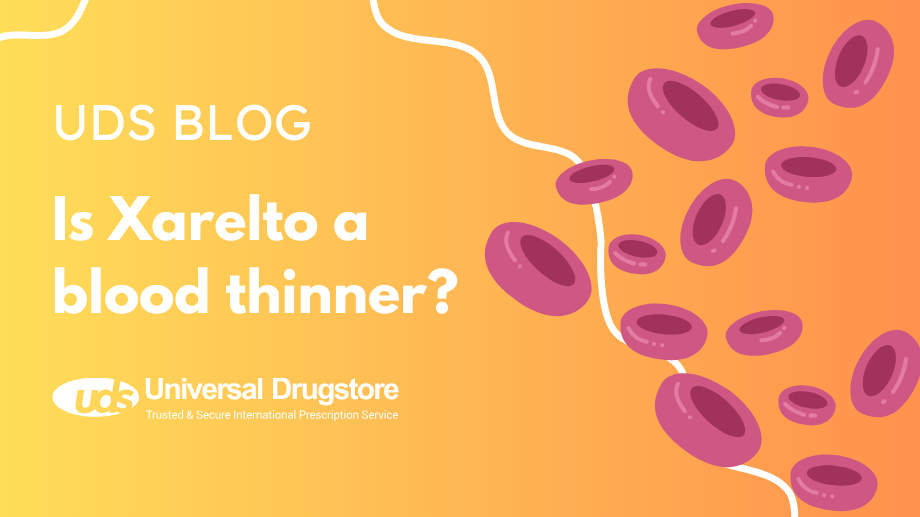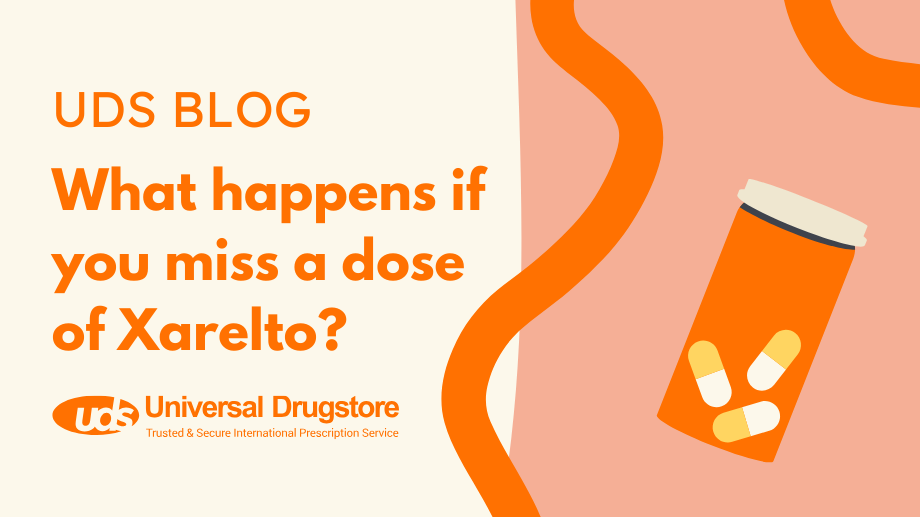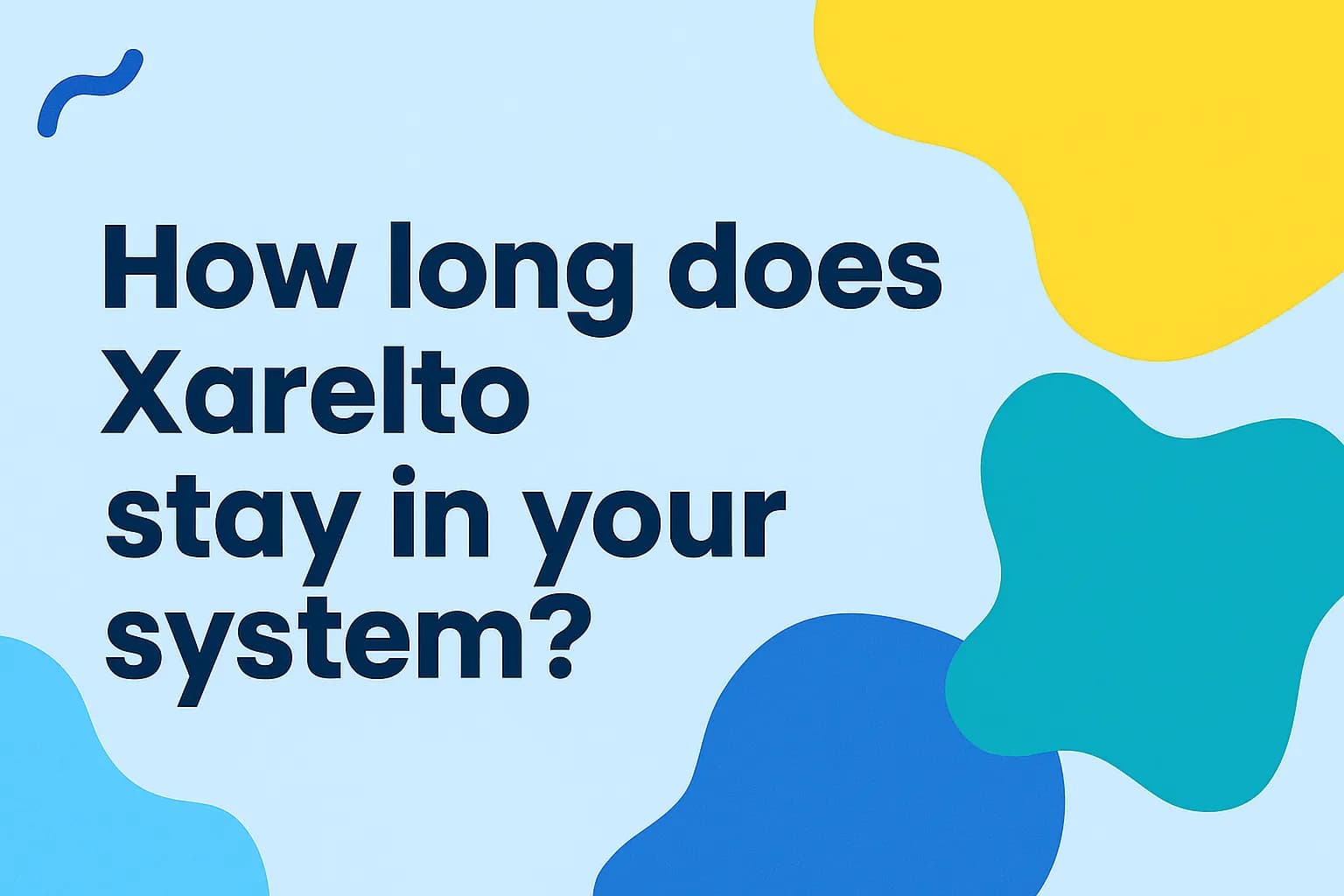Is Xarelto an anticoagulant?
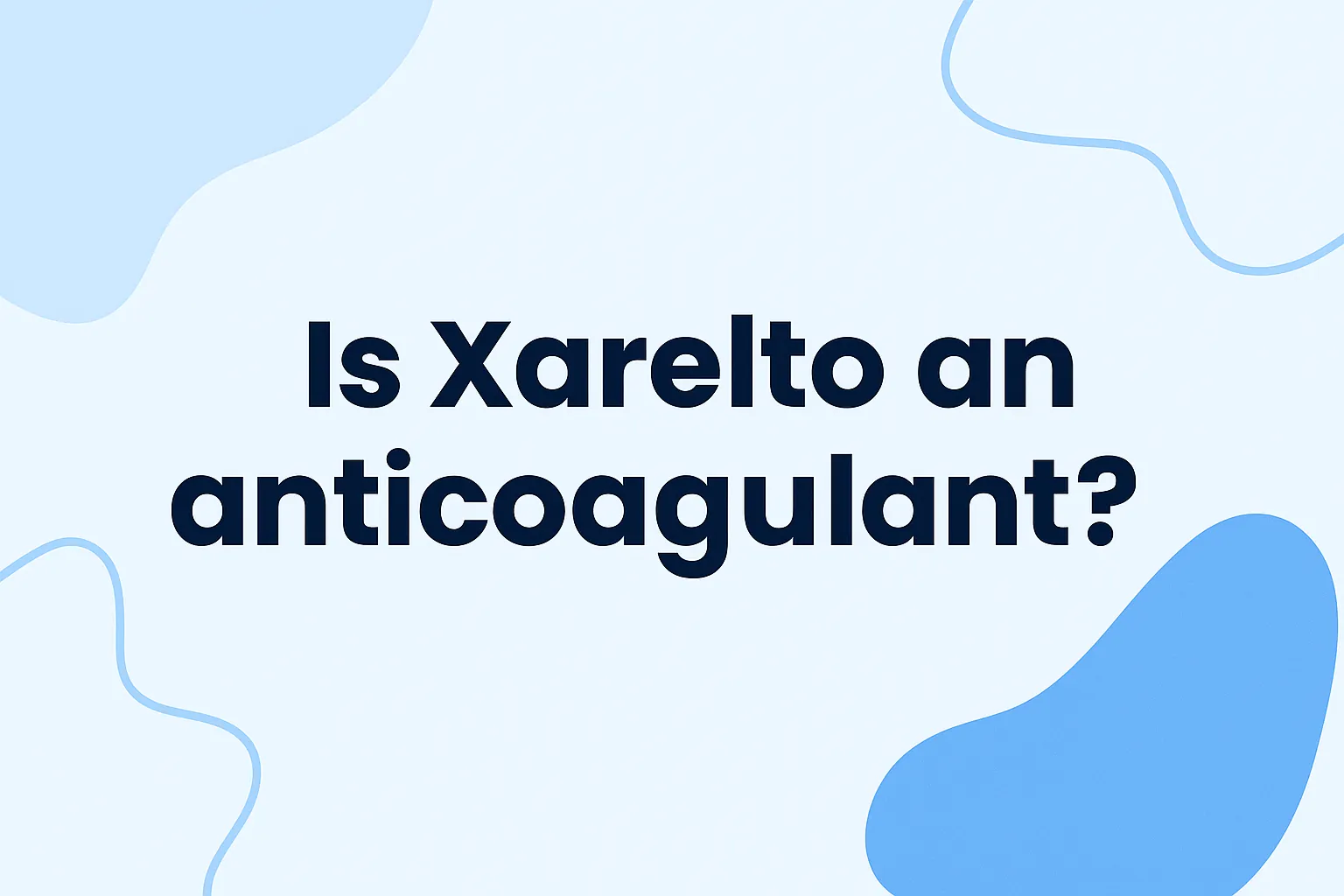
Yes, Xarelto (rivaroxaban) is considered a type of blood thinner called a direct oral anticoagulant (DOAC). It differs from other blood thinners that are considered antiplatelets. Antiplatelets lower your blood’s ability to clot by preventing platelets from sticking together and forming clots. Examples of antiplatelets include aspirin, Plavix (clopidogrel), Effient (prasugrel), and Brilinta (ticagrelor). Anticoagulants such as Xarelto lower your blood’s ability to clot by stopping specific enzymes (proteins), also known as clotting factors, from doing their job to help blood clots form.
Xarelto also differs from older blood thinners such as warfarin. Because it targets a specific clotting factor, it does not require regular blood testing like warfarin. It also has fewer drug interactions and there are no dietary restrictions while taking Xarelto.
What else do you need to know about Xarelto? Read on and find out.
Xarelto FAQs
What does Xarelto treat?
Xarelto is a brand-name medication that is used in both adults and children.
It is used in adults to:
- Reduce the risk of stroke and venous thromboembolism (VTE or blood clots) if you have non-valvular atrial fibrillation.
- Treat and prevent deep vein thrombosis (DVT).
- Treat and prevent pulmonary embolism (PE).
- Lower the risk of heart attack or stroke if you have coronary artery disease or peripheral arterial disease when taken with low-dose aspirin.
- Prevent PE and DVT after knee or hip replacement surgery.
- Reduce the risk of DVT or PE from occurring again if you have risk factors.
It is used in children to:
- Treat and prevent DVT or PE in those who have received at least 5 days of injectable blood thinner.
- Prevent blood clots in children 2 years and older with congenital heart disease who have undergone a Fontan procedure.
How does Xarelto work to prevent blood clots?
Xarelto is considered a factor Xa inhibitor. Factor Xa is a key enzyme involved in your body’s blood clotting process. By blocking factor Xa, Xarelto reduces your blood’s ability to form clots. This helps treat conditions like DVT and PE while also reducing the risk of stroke in people with atrial fibrillation. However, it does not dissolve existing clots.
What doses of Xarelto are available?
- 2.5 mg tablets
- 10 mg tablets
- 15 mg tablets
- 20 mg tablets
- 1 mg/ml oral suspension
How should you take Xarelto?
Take Xarelto by mouth once or twice a day, depending on your condition. Usually, it is taken with food. If you are using it for AFib, take it once daily with your evening meal.
Missed dose instructions:
- Once a day (adults): Take as soon as remembered on the same day. Do not double dose.
- Twice a day (adults): Take as soon as remembered on the same day. You can take 2 doses at once.
- Once a day (children): Give as soon as remembered. Skip if it’s too late.
- Twice a day (children): Give missed morning dose right away, even with evening dose. Missed evening dose can be given that same evening.
- Three times a day (children): Skip missed dose. Give next dose as scheduled.
If you cannot swallow tablets, crush and mix with applesauce and eat immediately with more food.
Do not stop or change your dose unless instructed by your healthcare provider.
What are some side effects of Xarelto?
Most common side effect in adults: bleeding. In children: bleeding, cough, vomiting, stomach virus, rash.
Other side effects may include:
- Back pain
- Dizziness
- Headache
- Fatigue
- Stomach pain
- Pain in arms and legs
- Anxiety
- Trouble sleeping
Serious side effects:
- Severe bleeding
- Signs: frequent nosebleeds, unusual bruising, blood in urine or stool, coughing or vomiting blood
- Allergic reactions (anaphylaxis): hives, swelling, shortness of breath
- Spinal or epidural blood clots: back pain, weakness, tingling, bowel or bladder problems
Contact your healthcare professional or the FDA at 1-800-FDA-1088 or www.fda.gov/medwatch.
Does Xarelto interact with any foods or medications?
Yes. Drug interactions include:
- Other anticoagulants (heparin, aspirin, NSAIDs)
- CYP3A4 inhibitors (erythromycin, ketoconazole, ritonavir)
- CYP3A4 inducers (rifampin, carbamazepine, phenytoin, St. John’s wort)
- SNRIs and SSRIs (increased bleeding risk)
Always inform your healthcare provider about all medications you take.
Is there a Boxed Warning with Xarelto?
Yes. Two major risks:
- Stopping Xarelto too soon increases clot risk.
- Spinal or epidural hematomas may cause paralysis if you undergo certain spinal procedures.
What warnings are there with Xarelto?
Tell your doctor if you have:
- Bleeding problems
- Kidney or liver disease
- Antiphospholipid syndrome
- Artificial heart valve
- Planned surgery or dental procedure
- Pregnancy or breastfeeding
Which blood thinner is safer: Eliquis or Xarelto?
Studies suggest Eliquis may be safer and more effective than Xarelto, with fewer bleeding risks and lower overall mortality.
How good is Xarelto as a blood thinner?
Xarelto has been shown to be as effective as warfarin and Lovenox in treating and preventing blood clots. It performed better than aspirin in some studies and was more effective than Lovenox in certain surgical settings and high-risk hospital patients.
Related medications
- Eliquis (apixaban)
- Pradaxa (dabigatran)
- Arixtra (fondaparinux)
- Savaysa (edoxaban)
- Coumadin (warfarin)
- Lovenox (enoxaparin)
